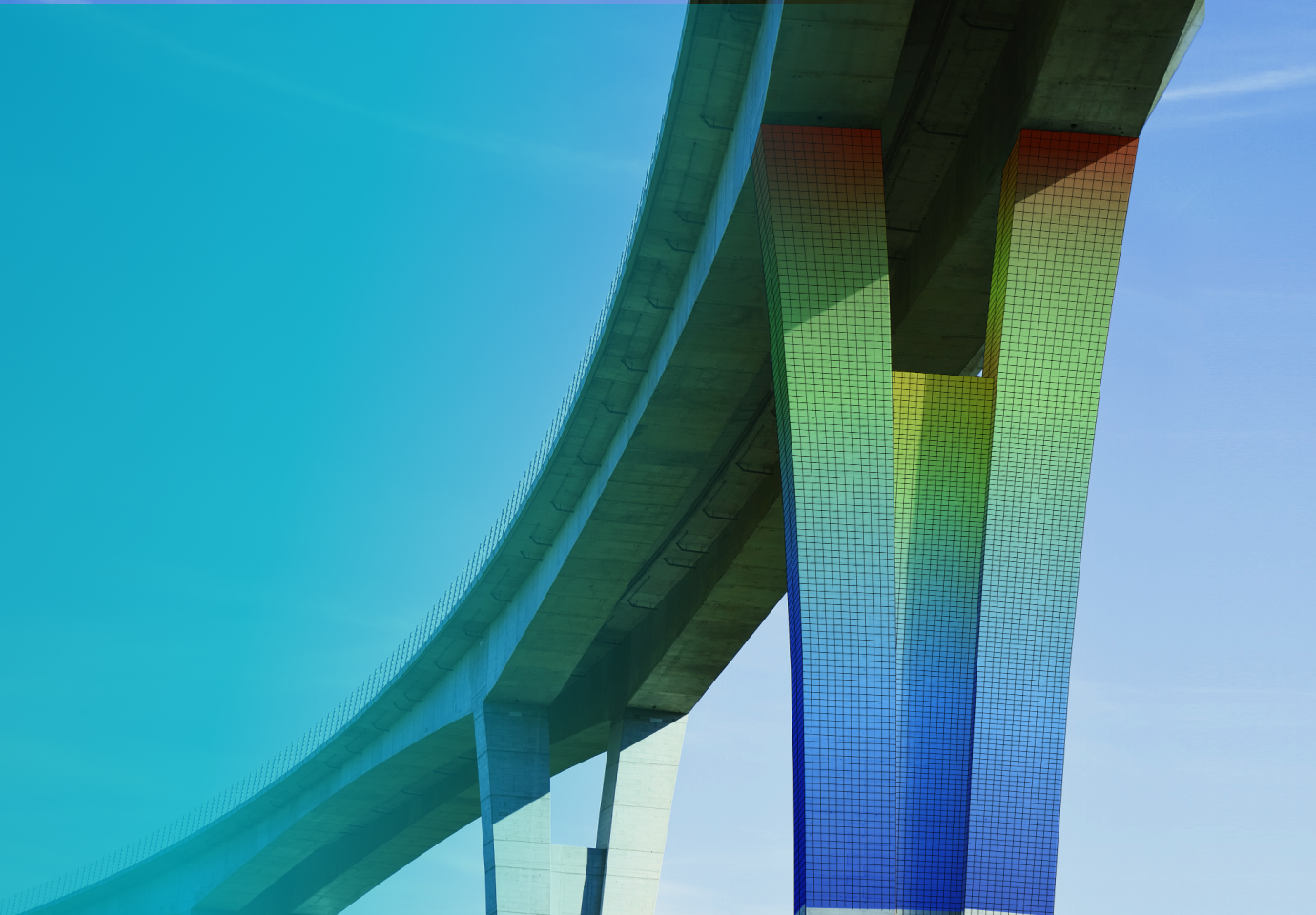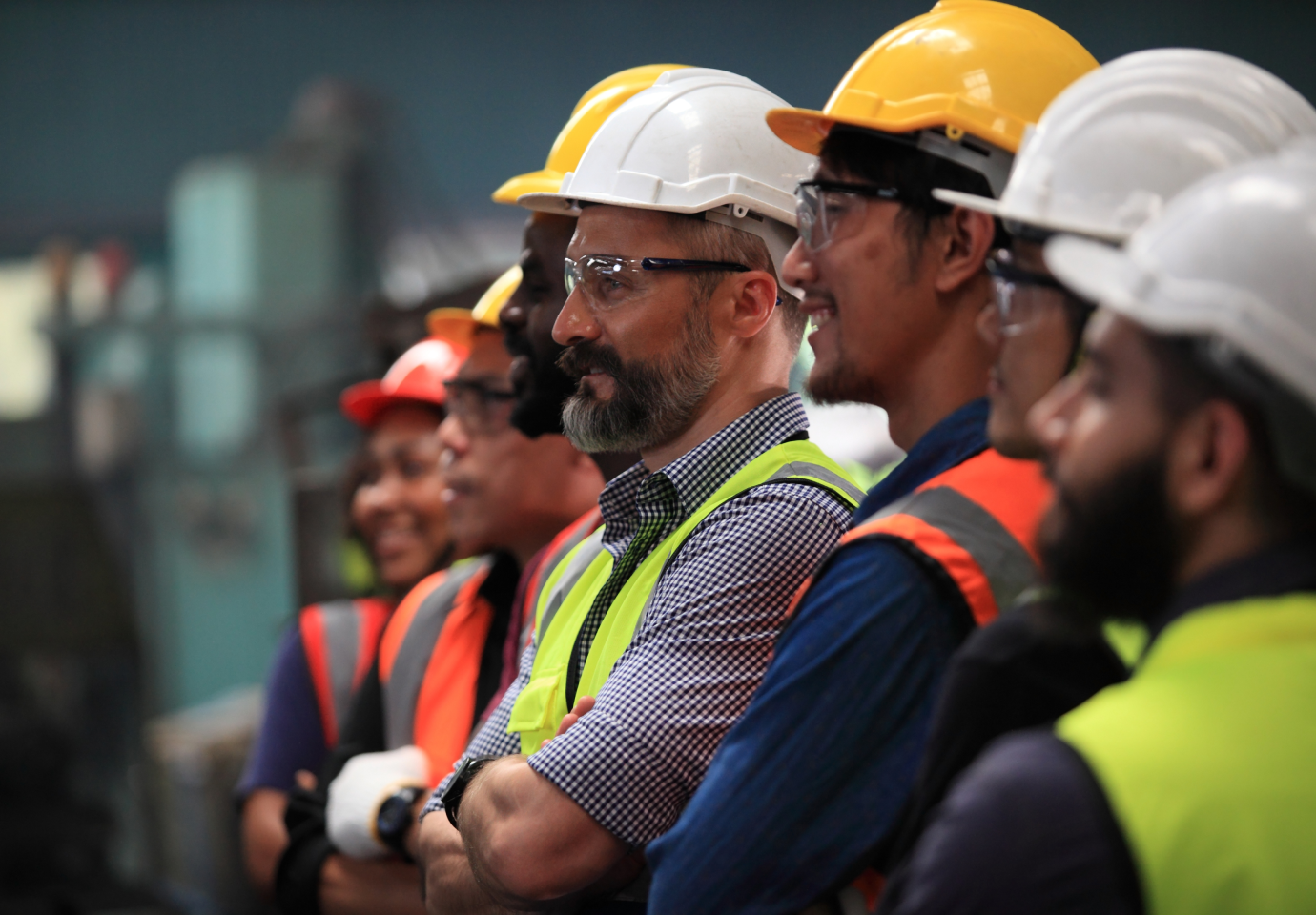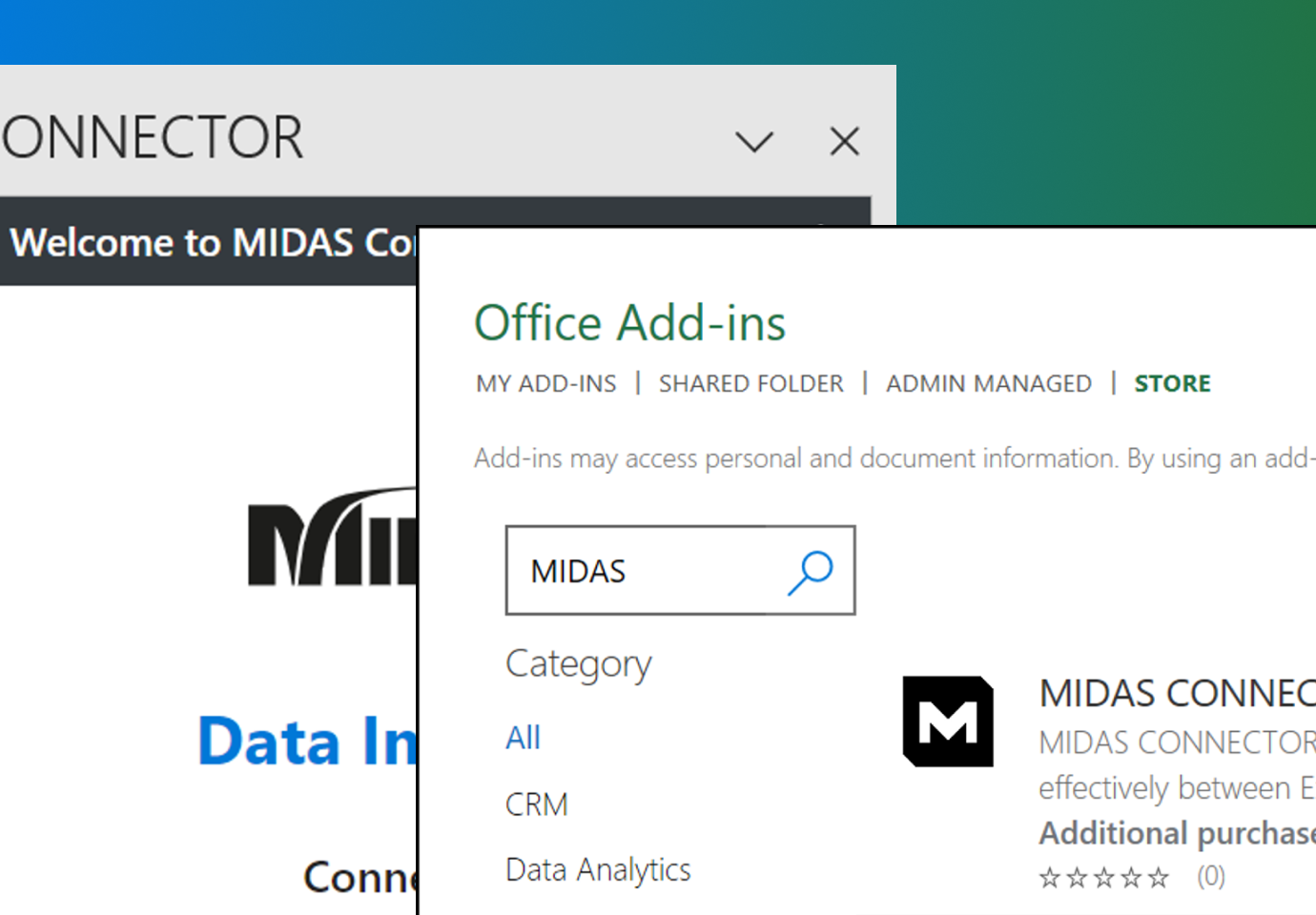1. Plug-in for Creating Load Combinations Using Only Basic Loads
To design structures, we must necessarily create load combinations. These combinations change depending on the state of the loads affecting the structure, and the coefficients considered for these loads vary according to standards. Therefore, while automatically generated load combinations are used for convenience in creating various load combinations, it is difficult to generate combinations that satisfy all conditions.
To create unsupported load combinations, users must manually generate each combination. A more convenient method involves first entering the load combinations based on the state of the load and then adjusting the coefficient values according to the required load conditions.
However, how inconvenient was it when these painstakingly created load combinations could not be integrated with other programs?
How much easier would it be if the load combinations you created could be automatically integrated when using different programs to design specific members?
2. Introducing Convert Load Combination into SDS Format.
Convert Load Combination into SDS Format is a Plug-in designed to easily create load combinations using only basic loads. Furthermore, it allows for integration with other programs, enabling the use of previously created load combinations.
3. What are the benefits of using the Convert Load Combination into the SDS Format Plug-in?
- Design time is reduced due to the decrease in unnecessary tasks when switching between different programs.
- It reduces human errors that come from repetitive modification tasks.
- It allows for more economical designs by preventing the automatic generation of unnecessary loads.
4. How was work done before using the Plug-in?
Before the use of the Plug-in, structural design typically involved using MIDAS products to analyze everything from the superstructure to the foundation in one go. However, to enhance efficiency, the analysis of the superstructure and the foundation might be conducted separately.
For such foundation analyses, the MIDAS SDS product, a dedicated slab analysis program, was used. This product requires that load combinations be input using only basic loads.
In situations where it was necessary to create load combinations that were linked between the original superstructure design and the foundation analysis, excluding automatically converted design codes by MIDAS SDS, modifications and additions had to be made directly in the program or with the assistance of programs like Excel.
5. When is the Convert Load Combination into SDS Format Plug-in convenient?
The Convert Load Combination into SDS Format Plug-in proves useful in the following situations:
-
When a load combination is dependent on another load combination: In SDS if a load combination is dependent on another, it cannot be created. Except for cases where SDS automatically generates a load combination, there's no need to modify it with the help of Excel.
-
When manually modifying automatically generated load combinations: In cases like wind tunnel experiments where directional loads are set, there's no need to consider negative coefficients for the load combination values. However, for automatically generated lateral loads, which are input as both positive and negative, there's no need to reset previously deleted load combinations during design.
-
When repeatedly changing load combinations during the design of the superstructure: If the design of the superstructure requires repeated adjustments to the load combinations based on dynamic analysis results, executing these changes in GEN/CIVIL means there's no need to reset the combinations in SDS.
-
When creating load combinations not supported by SDS: Since SDS supports fewer design standards compared to GEN/CIVIL, there's no need to recreate unsupported design standards in SDS.
6. How to use the Convert Load Combination into the SDS Format Plug-in?
Load combinations are composed of Load Cases and Factors as shown below:

To input a load combination in a new form, it is necessary to create it by considering the existing
coefficients as follows:

The plug-in works by multiplying the coefficients of each load combination when one load combination includes another. It ultimately changes it into a load combination composed only of basic loads.
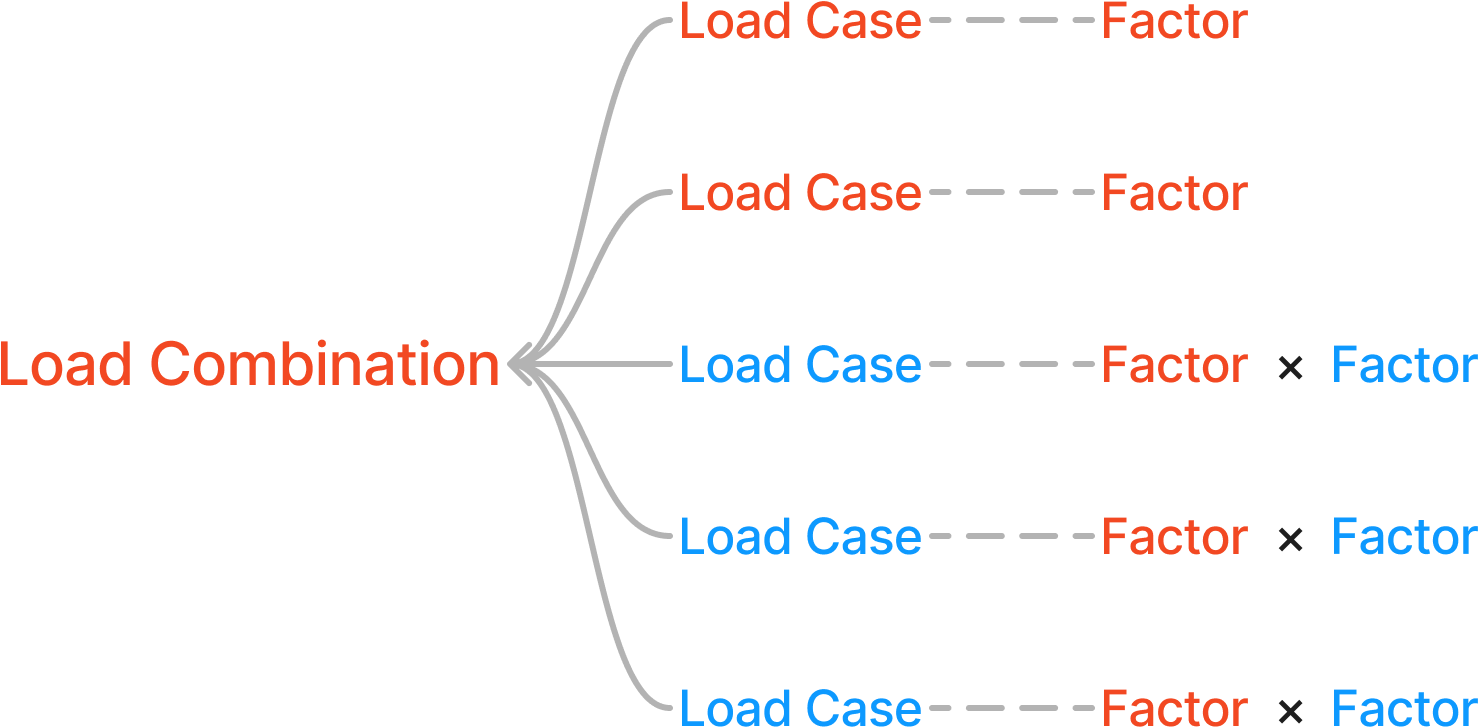
But, this explanation pertains to the operation of the plug-in and does not change the pre-set Load Combination in the program.
7. How to Operate the Plug-in
-
After running the plug-in, select the "Select lcb Type" to choose the Design Type you want to import.
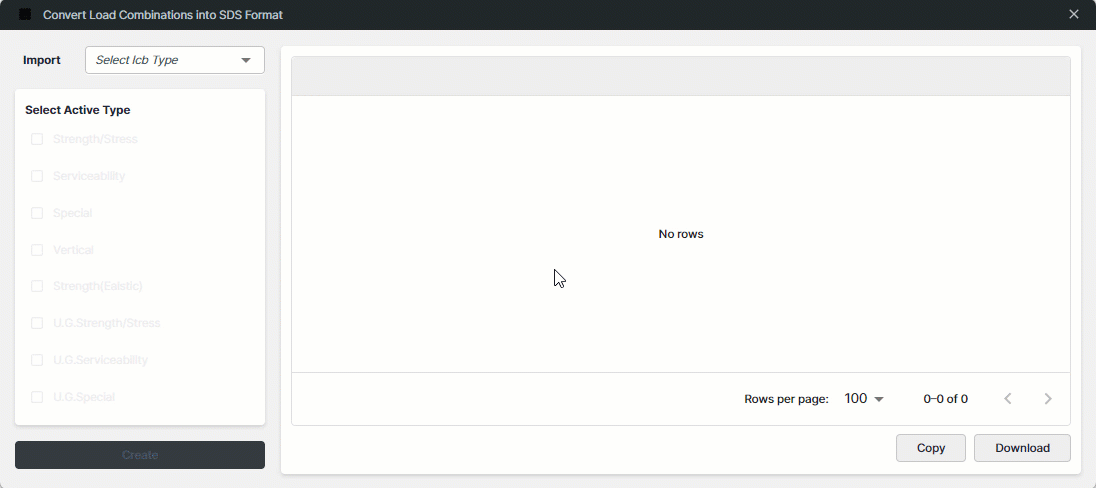
-
Once the Design Type is selected, the "Select Active Type" window will be activated, showing only the Types where a Load Combination currently exists. Select the Type you wish to convert into SDS LCB Type and press the Create button to convert it into the SDS Format.
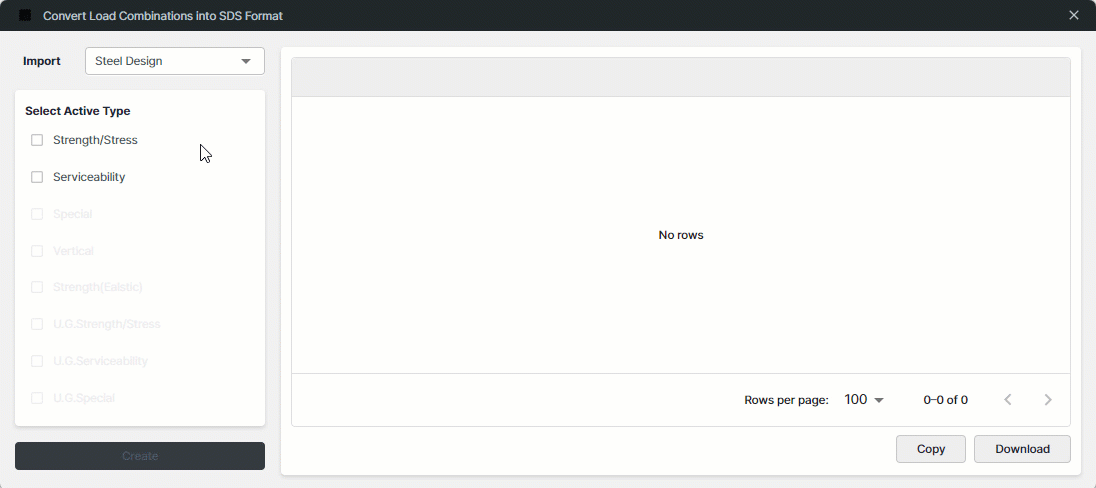
-
Since SDS does not yet have an active API, load combinations must be entered using a copy-and-paste method. There are two methods: the first saves the load combination to the Clipboard for immediate pasting into SDS, and the second allows the user to modify the load combination as desired by downloading it as an Excel file. The download method automatically saves to the OS's Download folder.
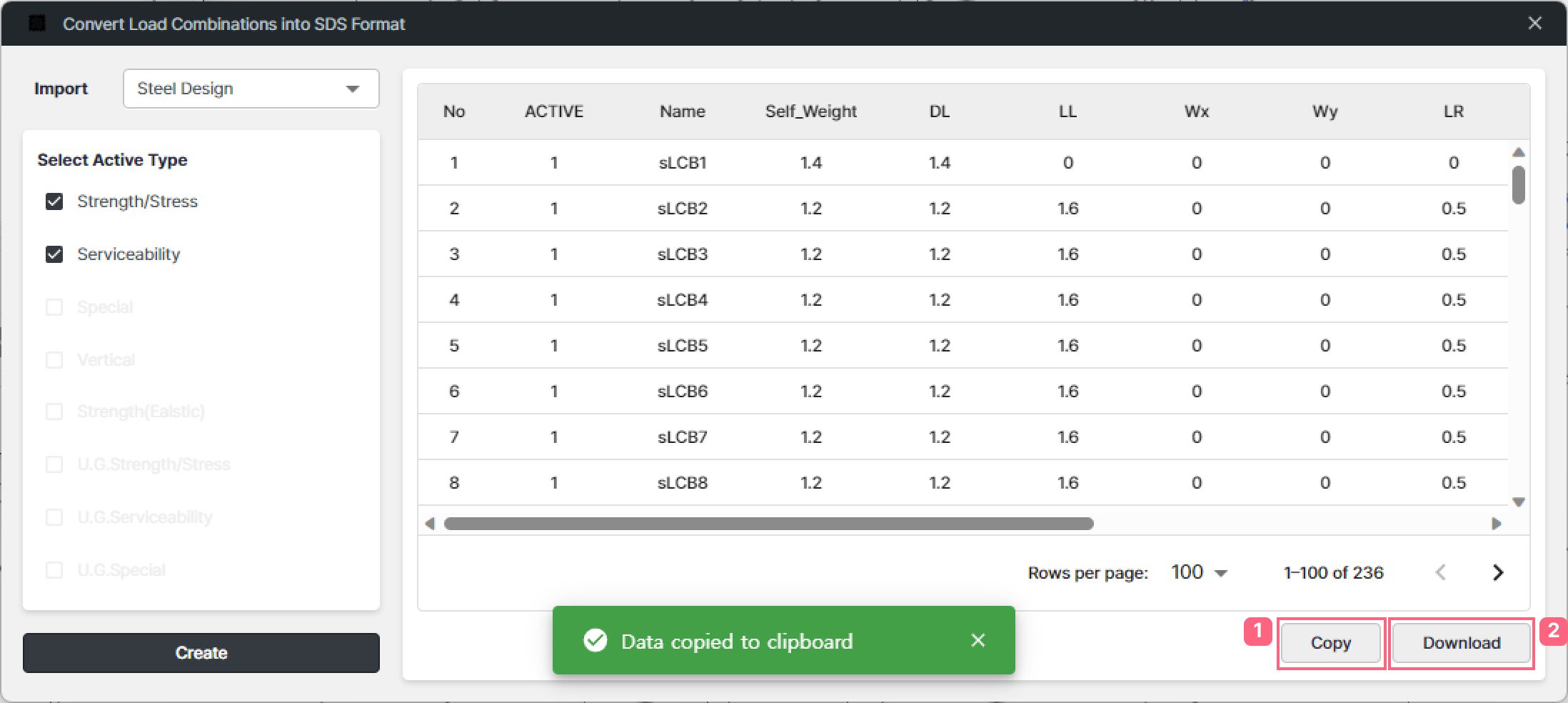
-
The copied load combination is then completed by pasting it into the active cell of row 1 in the Load Combinations' Spread Sheet Form in SDS.
 Get Started midas Civil
Get Started midas Civil
 Featured blog of this week
Featured blog of this week






